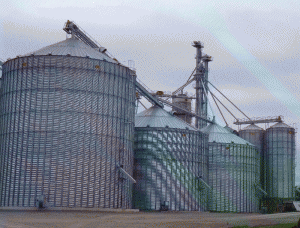Research roundup
FIND OUT WHAT’S NEW IN THE WORLD OF RESEARCH
High linoleic soybean oil now available for product trials
Lilian Schaer, Soy 20/20
High linoleic soybean oil from a new Ontario soybean variety under development at the University of Guelph is now available in limited quantities for industrial product development trials.
This oil is extracted from a new soybean variety, OAC 13-55C-HL, originally developed at the University of Guelph by the late Dr. Gary Ablett for potential food use. It is now being looked at for its potential in industrial material applications like paints, coatings, polyols and epoxies, and other products where oilseed oils could be used.
The oil has a fatty acid profile that is approximately 33 per cent higher in linoleic acid than commodity soybean oil; all other fatty acid levels, including saturates, are lower. It also has a 12 per cent increase in double bonds compared to commodity soybean oil – and the more double bonds, the more reactive the oil, which should allow for improvements in production efficiency and material synthesis. The oil and fatty acids can be modified for use in low Volatile Organic Compound (VOC) coatings or be synthesized and converted into products like polyols and epoxies.
There is a growing interest by industry to move towards using more sustainable feedstocks. Development of high linoleic soybean oil as replacement feedstocks for those currently derived from petroleum will have numerous positive outcomes, including renewable, sustainable, and locally produced products. It will also add diversity to the agricultural sector.
Soy 20/20 is supported by Growing Forward 2, a federal-provincial-territorial initiative and by Grain Farmers of Ontario. Visit www.soy2020.ca for more information. •
Common wheat enzyme could boost yields
Plant scientists at Lancaster University, Rothamsted Research, and The International Maize and Wheat Improvement Center (CIMMYT) have been investigating a naturally occurring plant enzyme known as Rubisco to explore its ability to boost photosynthesis and increase crop yields.
Research measured photosynthesis in 25 genotypes of wheat — including wild relatives of bread wheat — and found variation exists even amongst closely related genotypes. Each type was surveyed to identify superior Rubisco enzymes for improving photosynthesis.
Two of the most efficient were Rubisco from plants known as Aegilops cylindrica (jointed goatgrass) and Hordeum vulgare (barley), which both showed promising Rubisco catalytic properties that should be explored in the context of improving photosynthesis, and ultimately grain yield, in wheat.
Models suggest that incorporating the new enzymes into wheat could increase photosynthesis by up to 20% under some field conditions.
Improving the efficiency of photosynthesis — the way crops turn carbon dioxide in our atmosphere to grain — may seem ambitious but it offers the best opportunity for producing the scale of change in crop yield needed to feed a growing global population in a changing world climate.
Research associates Anneke Prins and Doug Orr conducted the experimental work which was jointly funded by CIMMYT and by Realizing Increased Photosynthetic Efficiency, a project funded by the Bill & Melinda Gates Foundation and led by the University of Illinois at the Carl R. Woese Institute for Genomic Biology.
“This is an exciting piece of work showing that Rubisco catalytic properties vary in close relatives of wheat,” Orr said. “As part of the RIPE project, we are screening a wide range of species from across the globe, and aim to identify variation that will enable improving photosynthesis and biomass production in rice, cassava, and soybean.”
Source: Carl R. Woese Institute for Genomic Biology, University of Illinois at Urbana-Champaign. “Enzymes with potential to increase wheat yields.” ScienceDaily. ScienceDaily, 28 January 2016. •








